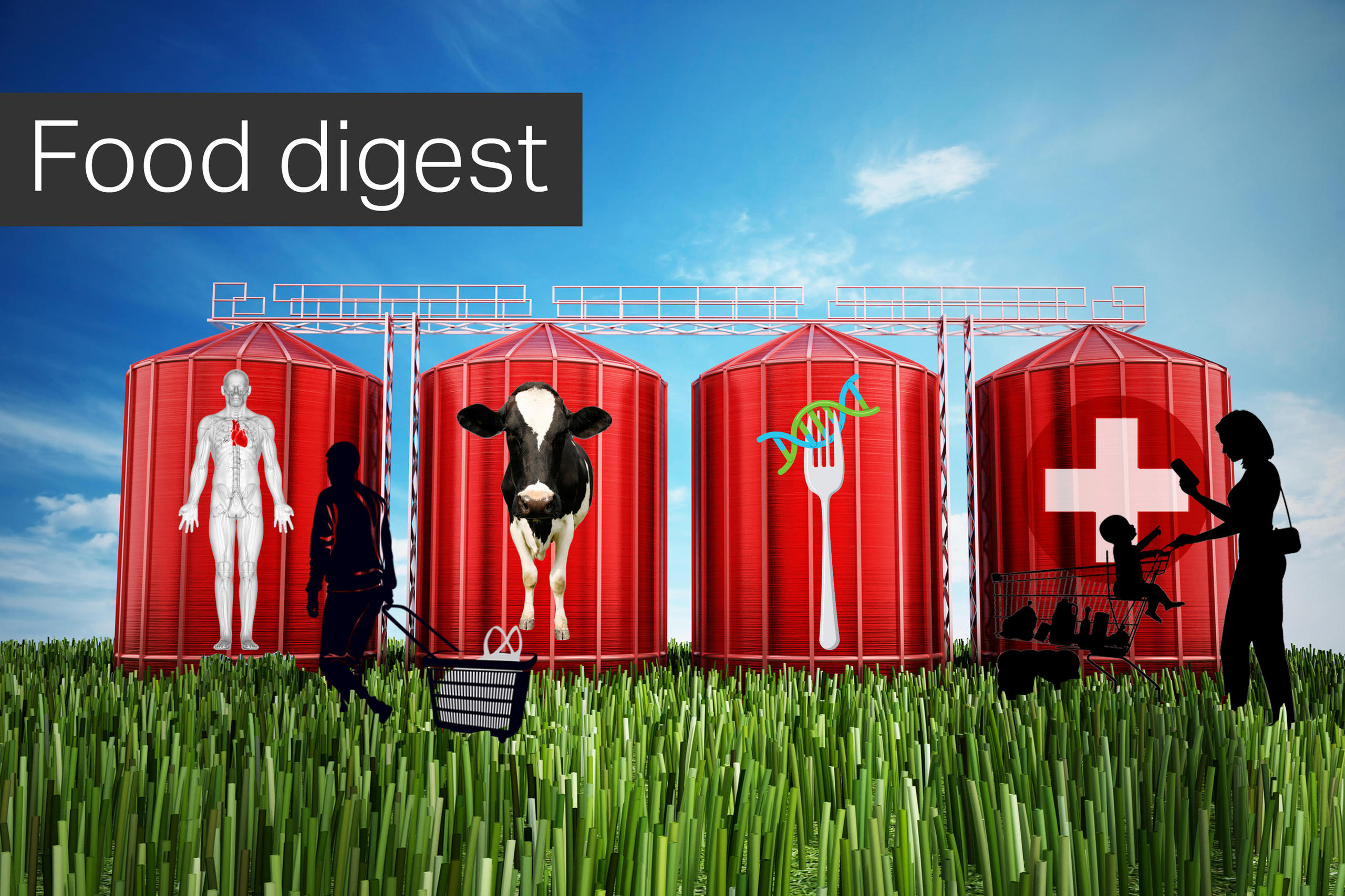Four ways your kids are being nudged online to eat junk food

Unhealthy food is being advertised online to children as young as four. This is one conclusion of a Swiss pilot of a World Health Organization (WHO) monitoring tool.
Nearly one in three children (29% of boys and 27% of girls) in the World Health Organization’s (WHO) European region is overweight or obese, according to a WHO report published in May 2022External link, the latest to date. The health issue affects 23% of Swiss children aged five to nine, and 21% of children aged 10 to 19.
Among the four policy recommendations made by the Geneva-based organisation to combat poor eating habits among the population is to “ban online advertising of unhealthy foods to children” (the other three are taxing sugary foods and drinks, restricting prominent positioning and promotion of unhealthy foods and limiting takeaway outlets in low-income neighbourhoods).
Several countries like Chile, Mexico, Taiwan and Korea have restrictions on advertising junk food to children but they are limited to children programmes on television and product placement in schools.
Switzerland currently does not restrict advertising of unhealthy food to children. It relies instead on a voluntary initiative by the food sector initiated in 2010 called Swiss Pledge to self-regulate. Only products that meet defined nutritional criteria can be advertised to children. A third-party verification for 2022 showed that 99.1% of TV adverts by Swiss Pledge member companies were compliant compared to 96.8% of ads on social media.
However, a study commissioned by the Federal Food Safety and Veterinary Office concluded that the nutritional criteria for food advertising to children should be based on WHO standards and not on those set by the companies.
This March, the WHO Europe Nutrient Profile Model (NPM) was published to help countries set regulations on advertising standards.
In Switzerland, the average age a child acquires their smartphone is nine years and 11 months, thus exposing them to online ads at a young age. To address this, the WHO developed a CLICK framework monitoring tool in 2020 to enable countries to monitor the impact of online advertising of unhealthy food on child behaviour.
It includes installing an app on the mobile phones of children to ascertain how they are being targeted by big food brands. Switzerland is among only three countries (including Norway and Portugal) that have tested the CLICK monitoring framework. In July, the Federal Food Safety and Veterinary Office, released a report based on its findings.
The Swiss CLICK monitoring pilotExternal link revealed that almost 12% of the 6,543 online ads seen by 77 Swiss children between four and 16 years of age over three weeks were selling food and drink products. The children participating in the trial spent an average of 7.79 seconds watching such ads (mostly on YouTube) with chocolate and sweets making up the largest share of ads in this category.
Worryingly, it was the youngest age group (four to nine years) that was most exposed to this kind of advertising.
“As part of the planned revision of the Law on Foodstuffs, the Federal Food Safety and Veterinary Office is examining the possibility of regulating advertising aimed at children for products that are too sweet, too fatty, too salty or too high in energy. This follows years of fruitless negotiations with the food industry to voluntarily reduce advertising aimed at children,” a spokesperson for the Federal Food Safety and Veterinary Office told SWI swissinfo.ch by email.
The Swiss study, that includes the CLICK pilot, also analysed the way food companies were targeting children and warned that online advertising is different from television.
Online advertising blurs the lines
Children recognise advertising on television from as early as five years of age. At around eight years, they are able to figure out that ads are meant to sell products and at 11 they are aware that they are being persuaded to buy something.
Online advertising is more subtle which makes it more difficult for children to identify than on television. Children aged six seem to recognise only a third of the adverts on the internet, those aged eight around half, and those aged between 10 and 12 only three quarters. One of the reasons mentioned in the Swiss report is the absence of advertising jingles in online ads. On television, ads aimed at children usually have a jingle at the start and end which helps children identify marketing from content.
Disclosures are difficult to process
Companies and brand influencers are often required to use disclosures and disclaimers on brand partnerships or health warnings when advertising a product online. However, for children to process them, the timing of such disclosures and disclaimers in an ad is vital. If they are displayed in a stand-alone manner before the videos begin, children watch the disclosure about two and a half times longer than if it were shown as part of the advertisement.
Health warnings and advertising disclosures could also be more effective if the information is shown without any other content being displayed simultaneously. Basically, an ad is better recognised as one if it is divulged as so before the video rather than during the video.
“Today, online platforms do not offer this type of setting. Warnings and disclosures are always displayed at the same time as the content,” says the Swiss report.
Peer-to-peer works better than direct marketing
As far back as 2013, studies have shown that exposure to visual cues about HFSS (high in fat, sugar and salt) foods and beverages presented by influencers through social networks affects the eating behaviour of children aged nine to 11. This is especially true when the influencers are children. One such peer-to-peer online advertising technique used by brands are “kids unboxing videos” on YouTube.
According to the Swiss report, the promotion of food and snacks by their peers on social networks has a greater impact on children than the use of direct marketing. This is because children are less vigilant about the persuasive effect of the message and consequently, they place more trust in the recommendations to buy unhealthy food products.
In 2020, YouTube banned food advertising on its “made for kids” channels. However, a University of Connecticut studyExternal link examining the impact of 400 YouTube videos produced by 13 popular American child influencer channels found that 65% of the videos had at least one type of food-related advertising. Of the branded food products advertised, candy accounted for 47% of child influencer appearances in 2020.
“As of June 2020, total video views for the analysed channels in this study exceeded 155 billion,” stated the study’s authors.
User generated content
Research shows that 18% of children’s overall exposure to food and drink promotion on social networks is through user-generated content. An example of the success of such a strategy is the 2014 Coca Cola campaign that printed people’s names on the bottle labels. The hashtag “#ShareaCoke” encouraged internet users to take a photo of themselves drinking a bottle of Coke with their name printed on the packaging and share it on social media.
Following this campaign, consumption of Coca Cola among young people increased by more than 1.25 million units over the previous summer which contributed to an 11% growth in sales volume.
“With user-generated content (UGC), regulations to restrict HFSS advertising on social networks are difficult to put in place, as it is necessary to determine whether the content is commercial or generated by an individual with no commercial intent,” says the Swiss report.
This article is part of our dedicated coverage of developments in the food industry from a consumer’s point of view. Despite its small size, Switzerland occupies a substantial place in the global food basket. It is home to food and agriculture giants like Nestlé and Syngenta, as well a major players in chocolate and dairy. The country is also positioning itself as a food tech hub with many startups and a dedicated incubator in the form of the Swiss Food and Nutrition Valley. The Alpine nation is also the European hub for many commodity firms dealing with food products like soy, cocoa, coffee and palm oil.

In compliance with the JTI standards
More: SWI swissinfo.ch certified by the Journalism Trust Initiative












You can find an overview of ongoing debates with our journalists here . Please join us!
If you want to start a conversation about a topic raised in this article or want to report factual errors, email us at english@swissinfo.ch.